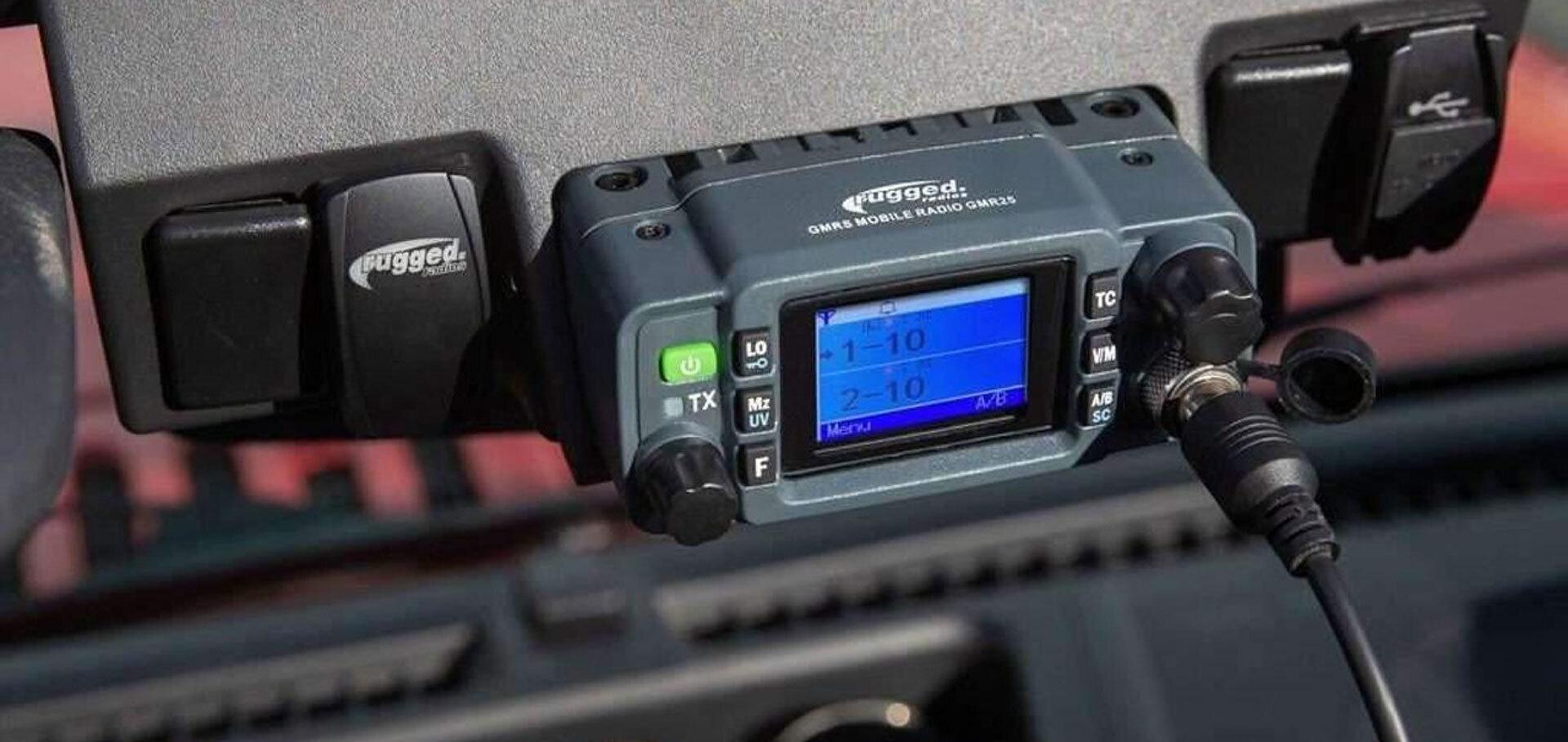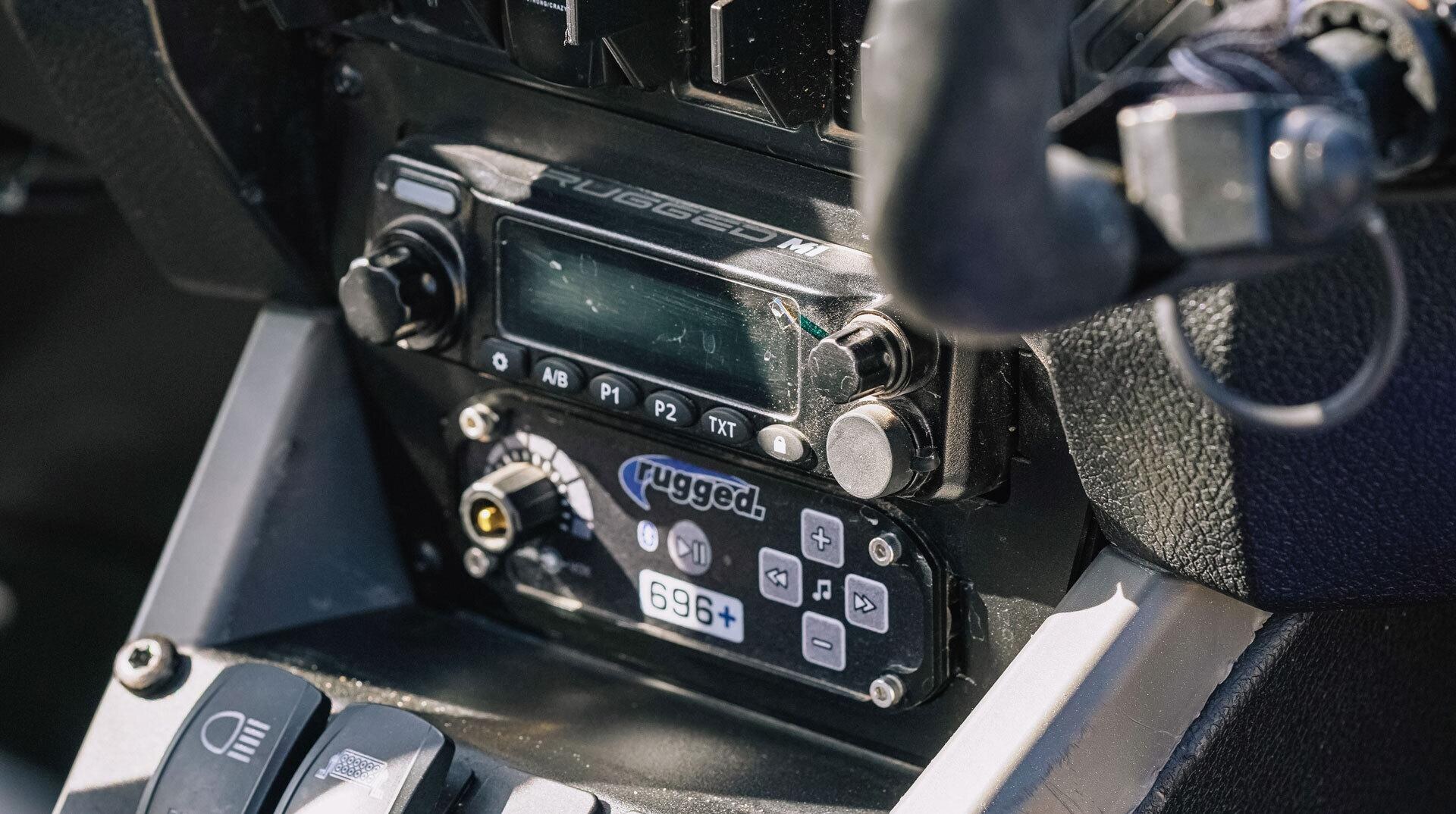GMRS vs Business Band Guide with Rugged Radios
Which Radio Option Is Right For You? Rugged Radios Breaks Down GMRS vs Business Band
When choosing a communication system for your UTV, it's essential to understand the differences between General Mobile Radio Service (GMRS) and Business Band radios. Rugged Radios offers both options, each with unique features tailored to specific needs. Here's a breakdown to help you decide which is the best fit for your off-roading adventures.

GMRS Radios
GMRS radios are popular among off-road enthusiasts for their ease of use and versatility. Here are some key features:
- License Requirement: GMRS radios require a license from the FCC, but the process is straightforward and covers your entire family for ten years.
- Frequency Range: Operates on 462-467 MHz, offering clear communication with minimal interference. GMRS range is taller using an UHF (ultra high frequency), so it can go further especially in terrain changes.
- Power Output: Typically up to 50 watts, providing a good balance between range and battery life.
- Channels: 22 channels with 8 repeater channels, allowing for extended range with the use of repeaters.
- Compatibility: Compatible with many consumer-grade radios, making it easier to communicate with friends and family using different brands.
- Ease of Use: Designed for user-friendly operation, making them ideal for casual users.
- Cost: Generally more affordable

Business Band Radios
Business Band radios are designed for professional use, offering robust features for more demanding environments. Also used by Emergency Services like Police, Ambulance. Here are the key features:
- License Requirement: Business Band radios also require an FCC license, which is more complex and specific to your organization.
- Frequency Range: Operate on VHF (very high frequency) (136-174 MHz) and UHF (ultra high frequency) (400-470 MHz) frequencies, providing excellent range and penetration through obstacles.
- Power Output: Typically up to 110 watts, offering superior range and clarity, especially in rugged terrains.
- Channels: More channels available, including customizable frequencies to avoid interference.
- Compatibility: Designed for compatibility with other professional-grade radios, ensuring clear communication within a team or organization.
- Durability: Built to withstand harsh conditions, making them suitable for professional off-road racing or commercial use.
- Cost: Typically a bit more expensive due to the added added features and functionality.
Side-by-Side Comparison
| Feature | GMRS Radios | Business Band Radios |
| License Requirement | Simple FCC license (covers family for 10 years) | Complex FCC license (specific to the organization) |
| Frequency Range | 462-467 MHz | VHF: 136-174 MHz, UHF: 400-470 MHz |
| Power Output | Up to 50 watts | Up to 110 watts |
| Channels | 22 channels, 8 repeater channels | More channels, customizable frequencies |
| Compatibility | Compatible with many consumer-grade radios | Compatible with professional-grade radios |
| Ease of Use | User-friendly, ideal for casual users | Designed for professional use, robust |
| Durability | Standard durability | Built for harsh conditions |
| Cost | Less expensive | More premium |
Which One to Choose?
- GMRS: Ideal for families and casual off- road enthusiasts who want an easy-to-use, reliable communication system without the need for extensive setup.
- Business Band: Best for professional off-road racers, commercial operations, or those who need a more powerful, durable, and customizable communication solution.
Understanding these differences will help you choose the right Rugged Radios product to enhance your off- roading experience. Whether you're looking for simplicity and convenience or power and customization, Rugged Radios has the perfect solution for your needs.











